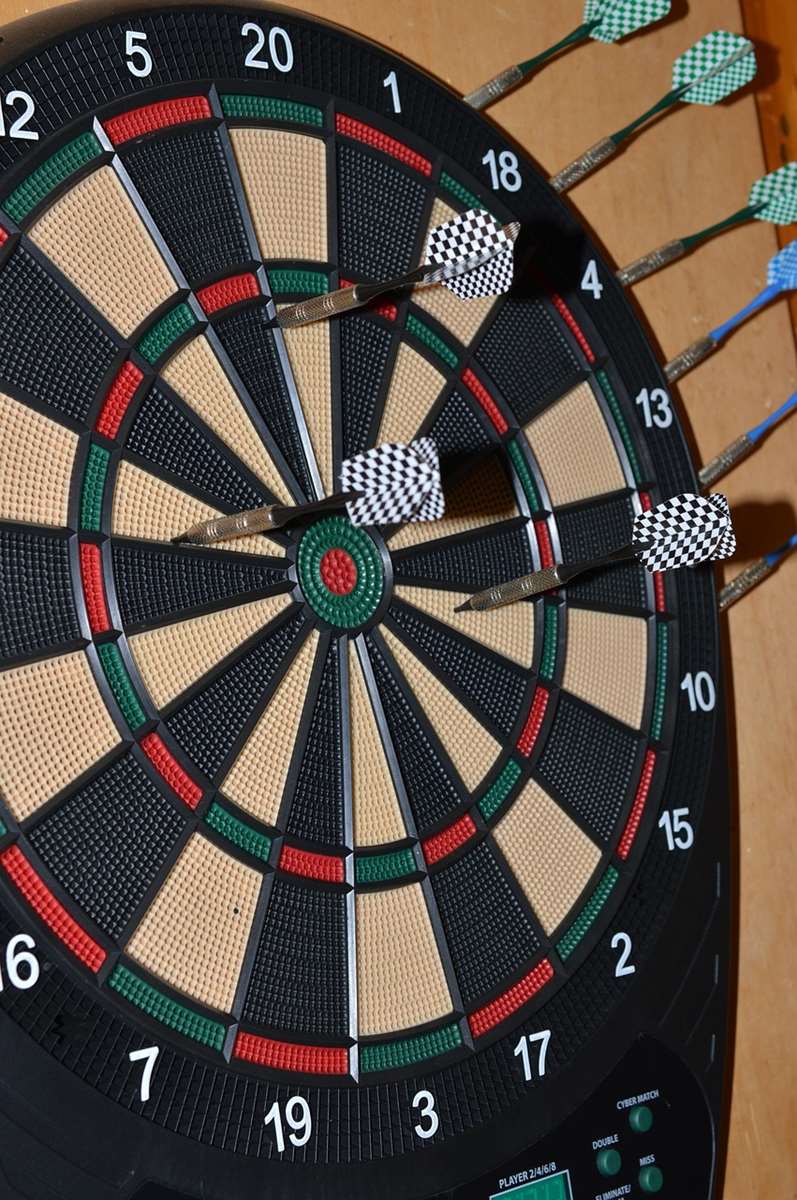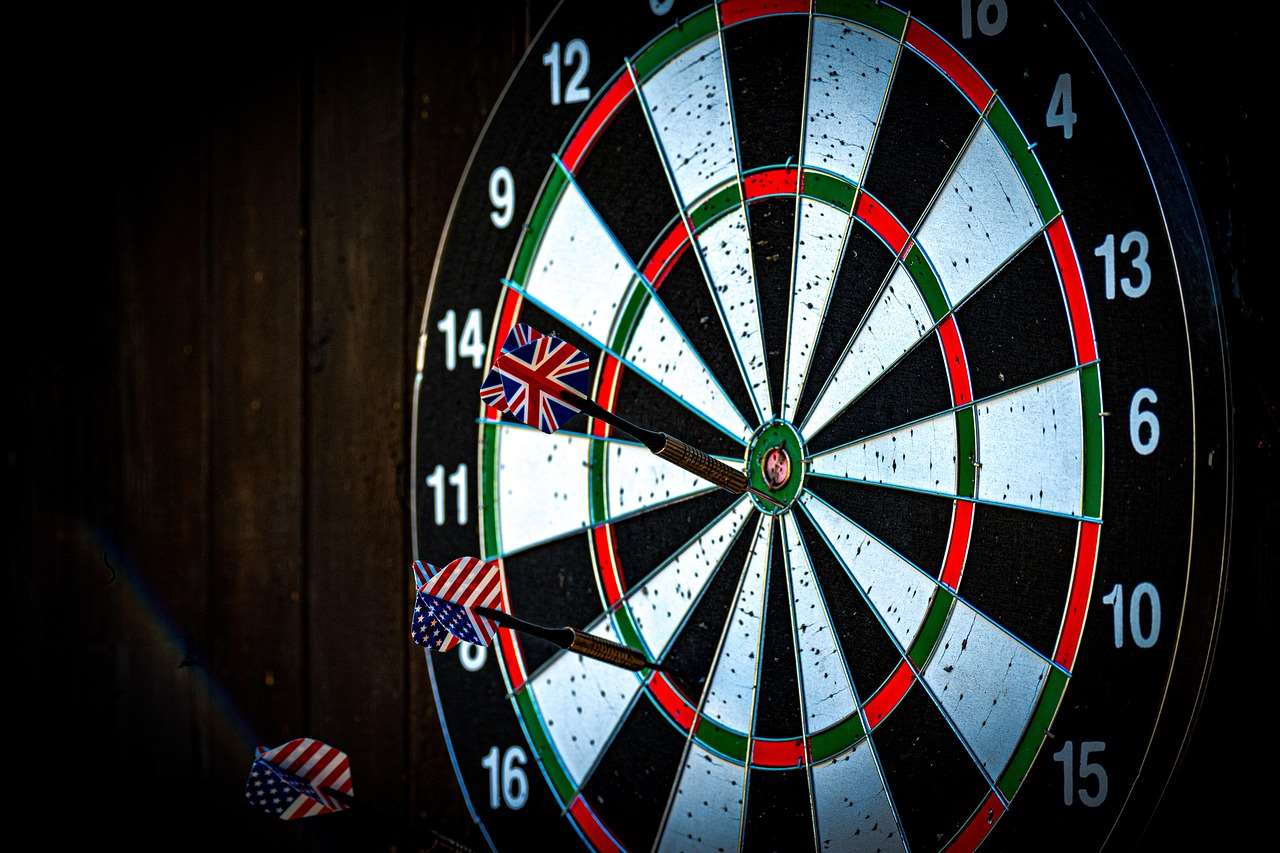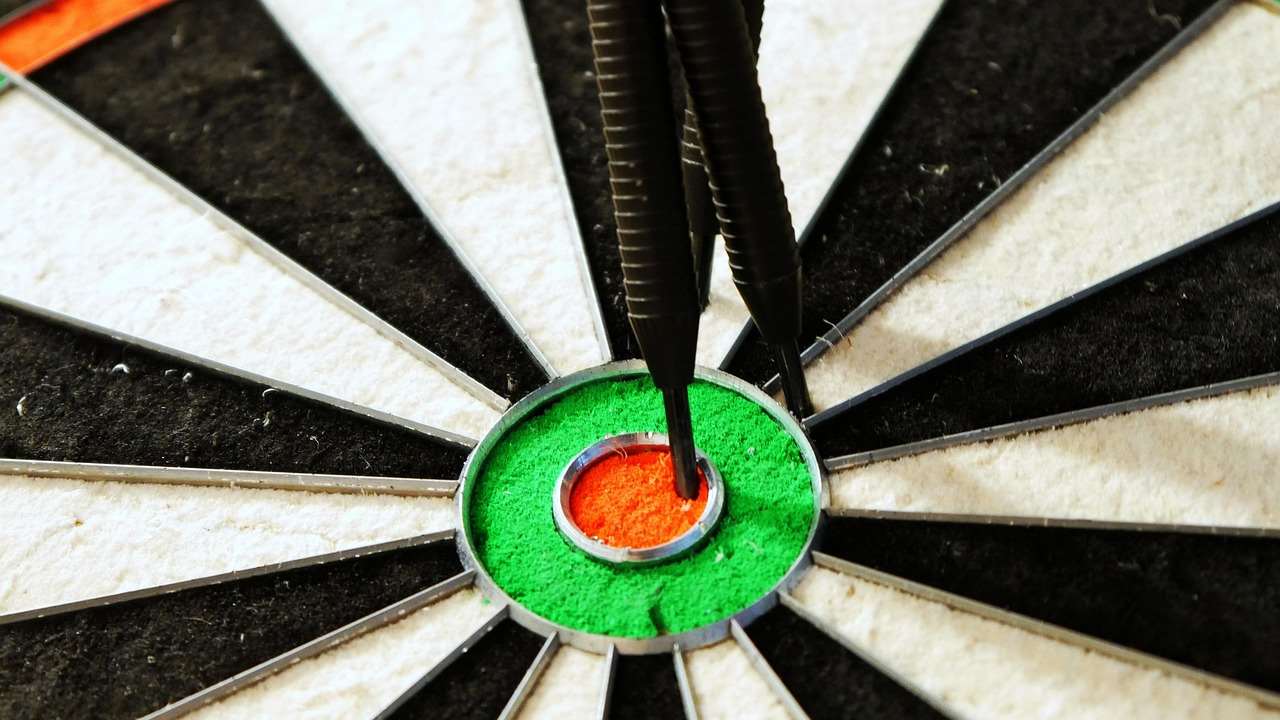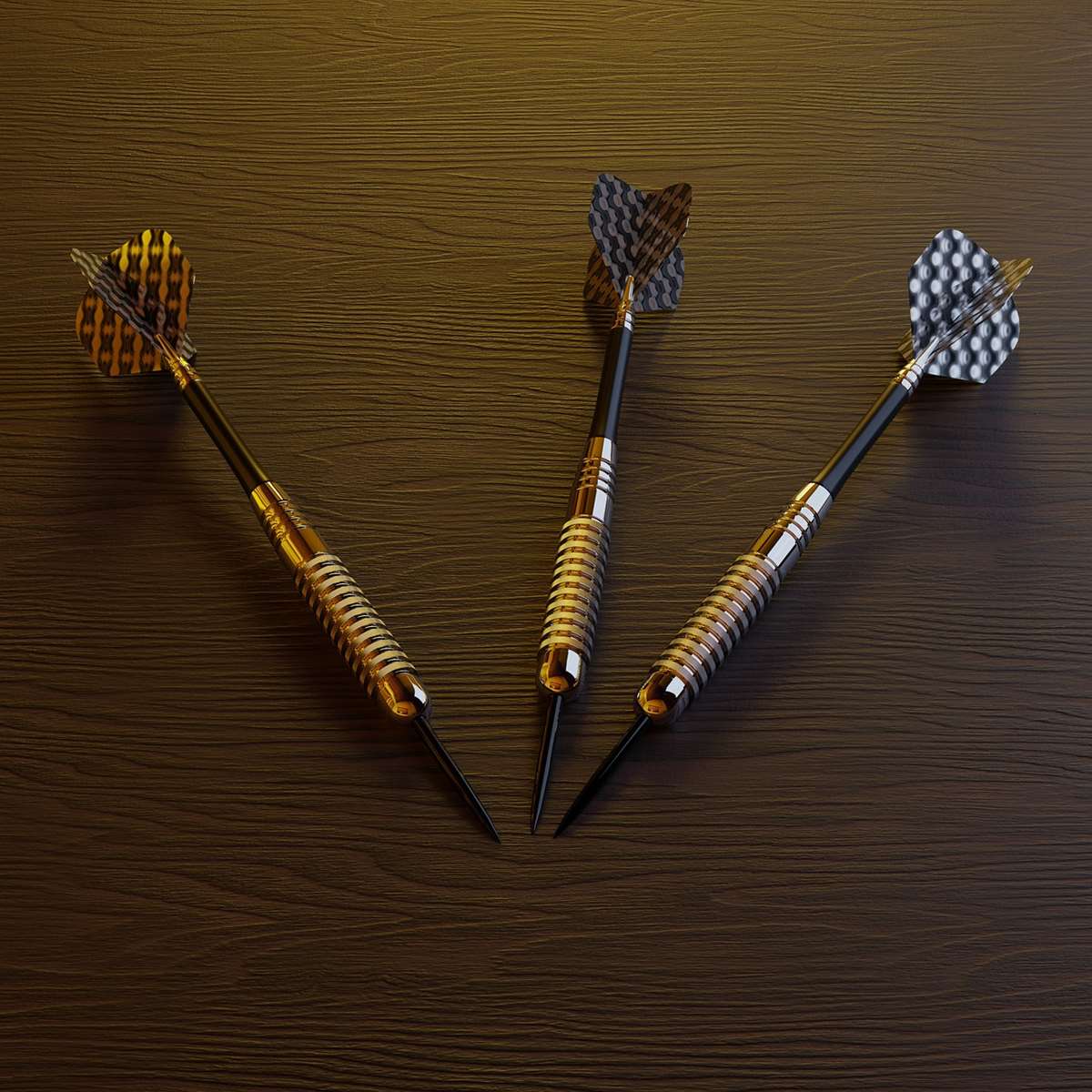Choosing between darts long or short shaft lengths boils down to personal grip, throwing style, and desired dart trajectory; generally, longer shafts stabilize the dart for a smoother flight, while shorter shafts offer quicker release and tighter grouping. This article explores the nuances of shaft length, helping you understand how different sizes impact your game and find the perfect fit for your unique throw.
⚠️ Still Using Pen & Paper (or a Chalkboard)?! ⚠️
Step into the future! The Dart Counter App handles all the scoring, suggests checkouts, and tracks your stats automatically. It's easier than you think!
Try the Smart Dart Counter App FREE!Ready for an upgrade? Click above!
Understanding the Impact of Shaft Length on Dart Flight
The shaft of a dart, also known as the stem, plays a critical role in determining the dart’s flight path and stability. It connects the barrel to the flight and contributes significantly to the overall balance of the dart. Choosing the right shaft length can dramatically improve your accuracy and consistency. The shaft length affects the **dart’s center of gravity** and thus its angle of attack in flight.
Consider this: if you’re experiencing excessive wobbling or fishtailing during flight, a longer shaft might provide the necessary stabilization. Conversely, if you feel your darts are landing at too steep of an angle, a shorter shaft could help flatten the trajectory. Experimentation is key to finding what works best for your individual throwing style and grip.

Key Factors Influencing Shaft Length Choice
- Grip Style: Where you grip the dart dictates the ideal shaft length. Rear grippers often prefer longer shafts to compensate for the shifted center of gravity. Front grippers might benefit from shorter shafts for increased control.
- Throwing Motion: A smooth, consistent throw can accommodate a wider range of shaft lengths. Jerky or inconsistent throws might require a more forgiving shaft length to correct imbalances. You can see the effect of different styles in throwing darts slow motion.
- Dartboard Setup: The distance to the dartboard and the type of dartboard setup (e.g., standard vs. electronic) can also influence shaft length selection. A dartboard set with light will make seeing the board, and the effect of your dart shaft choice, easier to see!
Darts Long or Short Shaft: A Detailed Comparison
Let’s delve into the specifics of darts long or short shaft options, examining the pros and cons of each to help you make an informed decision. Remember, there’s no one-size-fits-all answer, but understanding the characteristics of each length will guide you towards the optimal choice for your game.
Long Shafts: Stability and Forgiveness
Long dart shafts (typically ranging from 48mm to 55mm) are known for providing increased stability in flight. This is because the longer shaft extends the center of gravity further back, creating a more stable pendulum effect. This can be particularly beneficial for players with a less-than-perfect release or those who struggle with wobbling darts.
Advantages of Long Shafts:
- Improved stability and straighter flight path.
- More forgiving of minor inconsistencies in release.
- Helps to reduce fishtailing or wobbling.
- Potentially better for rear grippers.
Disadvantages of Long Shafts:
- Can create a higher dart arc, potentially leading to more deflections.
- May feel less responsive or less direct.
- Can be more susceptible to damage in a crowded dartboard.
Short Shafts: Control and Tight Grouping
Short dart shafts (typically ranging from 34mm to 41mm) offer a different set of advantages. They provide a more direct and responsive feel, allowing for greater control over the dart’s trajectory. Many players find that short shafts facilitate tighter groupings, as they allow for more precise placement of darts on the board.
Advantages of Short Shafts:
- Enhanced control and a more direct feel.
- Potentially tighter groupings.
- Flatter dart trajectory, reducing deflections.
- Often preferred by front grippers.

Disadvantages of Short Shafts:
- Less forgiving of inconsistencies in release.
- May require a more consistent and accurate throw.
- Can be less stable in flight for some players.
Material Matters: Shaft Materials and Their Impact
Beyond length, the material of your dart shaft also plays a role in its performance and durability. Common materials include nylon/plastic, aluminum, and carbon fiber. Each material offers a unique combination of weight, strength, and flexibility.
Nylon/Plastic Shafts
These are the most common and affordable type of dart shaft. They are lightweight and offer a good balance of durability and flexibility. However, they are also prone to bending or breaking upon impact, especially in crowded dartboards.
Aluminum Shafts
Aluminum shafts are more durable than nylon shafts and offer a slightly heavier feel. They are less likely to break, but they can bend upon impact. They also tend to loosen more easily than other types of shafts, so regular tightening is required. A dart flight holder may help keep your darts together if this is an issue.
Carbon Fiber Shafts
Carbon fiber shafts are the most expensive and durable option. They are incredibly strong and lightweight, offering excellent stability and resistance to bending or breaking. They are a good choice for serious players who demand the highest performance and durability.

Experimentation and Fine-Tuning: Finding Your Perfect Shaft Length
The best way to determine the optimal shaft length for your game is to experiment with different sizes and materials. Start with a few different lengths within the short and long ranges and see how they affect your dart flight, accuracy, and grouping. Pay attention to how the darts feel in your hand and how they respond to your throw. Don’t be afraid to try different combinations of barrel, shaft, and flight to find the perfect setup for your individual style.
Tips for Experimentation:
- Keep a record of your results. Note which shaft lengths you tried, your average score, and any observations about the dart’s flight path and feel.
- Try different shaft lengths with different barrel weights. A heavier barrel might require a longer shaft for balance, while a lighter barrel might benefit from a shorter shaft.
- Consider the shape and size of your dart flights. Larger flights provide more stability, while smaller flights offer more speed. Adjust your shaft length accordingly to achieve the desired balance. You can find high quality options in a dart review
Related Factors: Dart Weight, Grip, and Throwing Style
While shaft length is a crucial factor, it’s important to remember that it’s just one piece of the puzzle. Other factors, such as dart weight, grip style, and throwing technique, also play a significant role in your overall performance. Finding the right combination of these elements is essential for maximizing your potential.
Dart Weight
The weight of your darts can affect the ideal shaft length. Heavier darts generally require longer shafts for stability, while lighter darts may benefit from shorter shafts for increased control. Most darts fall within the 22-26 gram range, but experimenting with different weights can help you find what feels most comfortable and natural.
Grip Style
As mentioned earlier, your grip style significantly influences the optimal shaft length. Front grippers tend to prefer shorter shafts, while rear grippers often benefit from longer shafts. Experiment with different grip positions to see how they affect the dart’s balance and flight path. It also helps to review the basics, or even using a digital Digital dart score app to keep you on track and improve over time.

Throwing Style
A smooth, consistent throwing motion is crucial for achieving accuracy and consistency in darts. Work on developing a repeatable throwing style that minimizes unnecessary movement and maximizes control. Consider recording yourself to analyse your technique and identify areas for improvement. If you prefer a smooth barrel darts, you may want to consider short shafts as well.
Advanced Considerations: Swapping Shafts Mid-Game
Some professional dart players even change their shaft length during a match to adjust to changing conditions or to correct for minor inconsistencies in their throw. This requires a deep understanding of how shaft length affects dart flight and the ability to make quick adjustments under pressure. While this is an advanced technique, it highlights the importance of mastering the fundamentals of shaft selection and experimentation. Getting the best best darts barrel, shafts, and flights will help you achieve this goal.

Conclusion: Finding Your Perfect Darts Long or Short Shaft Solution
Ultimately, the choice between darts long or short shaft is a personal one that depends on a variety of factors, including your grip style, throwing motion, dart weight, and personal preferences. By understanding the characteristics of each shaft length and experimenting with different options, you can find the perfect setup to maximize your accuracy, consistency, and enjoyment of the game. Don’t be afraid to try different combinations of barrel, shaft, and flight to discover what works best for you. Now, grab your darts and start experimenting! Your perfect throw awaits. Remember to keep track of your progress, be patient, and enjoy the process of refining your game. Good luck, and happy darting!
Hi, I’m Dieter, and I created Dartcounter (Dartcounterapp.com). My motivation wasn’t being a darts expert – quite the opposite! When I first started playing, I loved the game but found keeping accurate scores and tracking stats difficult and distracting.
I figured I couldn’t be the only one struggling with this. So, I decided to build a solution: an easy-to-use application that everyone, no matter their experience level, could use to manage scoring effortlessly.
My goal for Dartcounter was simple: let the app handle the numbers – the scoring, the averages, the stats, even checkout suggestions – so players could focus purely on their throw and enjoying the game. It began as a way to solve my own beginner’s problem, and I’m thrilled it has grown into a helpful tool for the wider darts community.